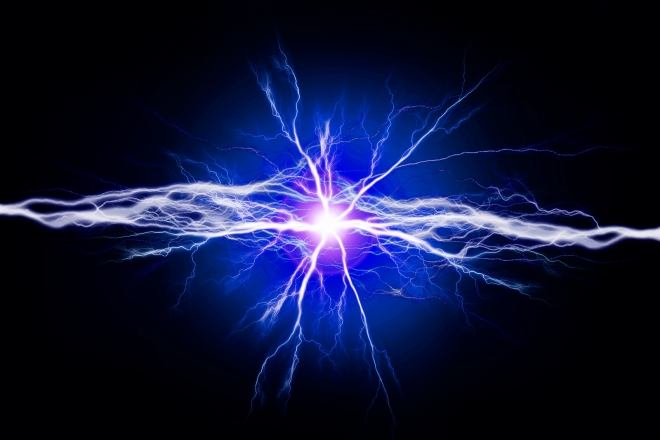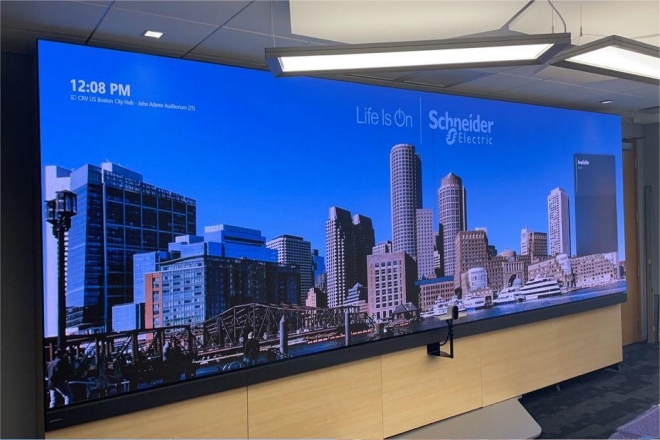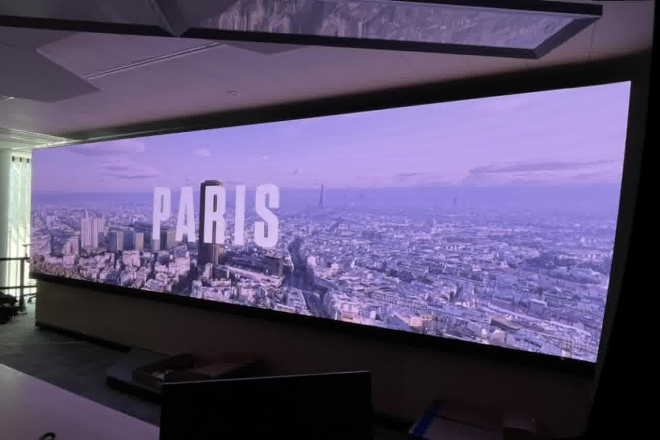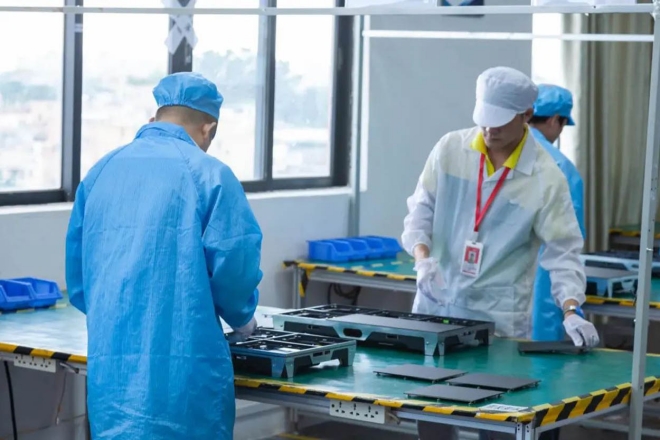Introduction

Behind the dazzling LED display, there is an invisible threat that cannot be ignored – static electricity. Every careless touch may quietly damage the display, affecting its display effect and service life. For users who rely on LED displays for information dissemination and visual display, this is undoubtedly a major hidden danger.
This article will directly cut into the topic, revealing the potential harm of static electricity to LED displays, and share a series of practical and effective anti-static measures. By reading this article, you will master the key skills to avoid static electricity, ensure that the LED display runs in the best condition, and escort your business and creative display.
1. Basic concepts and causes of static electricity

Static electricity, a common phenomenon in nature, often manifests itself in the form of “crackling” sounds and tiny sparks when taking off a sweater in winter. It is essentially an unbalanced distribution of electrons on the surface of an object, causing the object to be charged, just like the polarity difference of a magnet.
Static electricity is different from flowing current; it quietly attaches to the surface of an object. Static electricity is generated in various ways, including frictional charging (such as the friction between a comb and hair), separation after contact (charge imbalance caused by the transfer of electrons between objects), and induction charging (the effect of a charged object on the charge of surrounding objects).
In the case of LED displays, the source of static electricity is equally complex. As a “mobile static electricity source,” the human body continuously generates static electricity during movement and touch and may transfer these charges when directly contacting the display.
In addition, plastic products around the display, such as the housing and bracket, are prone to accumulate static electricity when rubbing against other materials.
At the same time, the electronic components inside the display and its control equipment may also generate static electricity during operation, especially in a dry environment, where the generation and accumulation of static electricity are more significant.
Therefore, the static electricity problem of LED displays needs to be comprehensively considered and prevented from multiple angles.
2. The harm of static electricity to LED display screens

The harm of static electricity to LED display screens is multifaceted, which can be mainly summarized as follows:
1). Irreversible damage to electronic components by electrostatic discharge
- Excessive voltage:
The voltage generated by electrostatic discharge can be as high as several thousand volts, which is far beyond the voltage range that electronic components can withstand.
Excessive voltage may cause the insulation layer of electronic components on the LED display screen, such as LED chips and transistors on circuit boards, to break down, causing permanent damage.
- Excessive current:
The current generated by electrostatic discharge is also very large and may reach tens of amperes, far exceeding the rated current of electronic components.
This large current may cause the wires or connector solder joints of the components to melt and the circuit board to soften, deform, or burn out, thereby
2). Irreversible damage to the LED display screen.
- Voltage offset:
Electrostatic discharge may also cause a momentary offset of the internal potential of components, resulting in distortion of digital or analog signals or causing the output voltage of components to deviate from the normal range, affecting the normal operation of the LED display.
- Magnetic field interference:
Electrostatic discharge will generate a strong magnetic field, which may interfere with the circuits and magnetic materials inside the LED display, causing flickering, color distortion, and even making the display unable to work properly.
3). Corrosion and short circuit of components caused by static electricity accumulation
When static electricity accumulates on the LED display, it may attract dust and tiny particles in the air. These particles may adhere to the components of the display under the action of static electricity, causing corrosion and short circuit.
In addition, static electricity accumulation may also cause electrochemical reactions in the metal parts inside the display, accelerating the corrosion process and shortening the service life of the display.
4). Effect of static electricity interference on the display effect and stability of LED display
- Degraded display effect:
Electrostatic interference may cause flickering and uneven color of the pixels of the LED display, affecting the display effect. In severe cases, it may also cause some or all pixels to fail, making the display unable to display images normally.
- Reduced stability:
Static interference may also make the operation of the LED display unstable, causing flickering, jumping or sudden shutdown. This instability will not only affect the user experience, but may also have a negative impact on the reliability and life of the display.
3. Measures to avoid static electricity on LED displays

In order to ensure that the LED display is protected from damage by static electricity, a series of effective preventive measures need to be taken. Here are some key measures:
1). Environmental control
Humidity control: Ensure that the humidity of the installation environment of the display is within a suitable range (usually recommended to be between 30%-70%) to avoid the risk of increased static electricity due to excessively dry air.
Temperature and chemical environment: Avoid using or storing LED displays in harsh environments such as high temperature, high humidity, and high acid/alkali/salt, which may aggravate static electricity problems.
Cleaning and dust prevention: Keep the environment around the display low in dust and away from flammable items, gases, and dust to reduce the conditions for static electricity generation and accumulation.
2). Grounding protection
Metal structure grounding: Ensure that all metal structures of the LED display are properly grounded, which is a key step in directing static electricity to the ground and can effectively reduce static electricity accumulation.
Grounding of tools and equipment: At the same time, ensure that all tools (such as electric screwdrivers) and switching power supplies that come into contact with the display screen also have electrostatic grounding protection measures to prevent the tools from becoming a medium for transmitting static electricity.
3). Use electrostatic protection equipment
Personal protection: When installing and maintaining LED display screens, operators should wear electrostatic protection equipment, such as electrostatic gloves, electrostatic wristbands, and anti-static work clothes, to reduce the impact of human static electricity on the display screen.
Anti-static products: Use anti-static products such as anti-static floors, anti-static workbenches, and anti-static grounding leads to provide a low-static working environment for the display screen.
4). Avoid using materials with static electricity
- Material selection: When contacting LED display screens, avoid using materials that may carry static electricity, such as plastic bags, polyester fibers, and foam plastics, to reduce the source of static electricity.
5). Use static eliminator
- Static eliminator equipment: Place a static eliminator near the display screen, which can actively eliminate the surrounding static charge and further reduce the risk of static interference.
6). Regular maintenance
Inspection and maintenance: Regularly inspect and maintain the LED display screen to ensure that all connections are in good condition and promptly eliminate fault points that may cause static electricity problems.
Cleaning method: When cleaning the display screen, use a soft brush to brush gently, and avoid using liquid substances to directly clean the surface of the LED module to prevent the introduction of new static electricity problems.
7). Establish standardized operating procedures
Training and operating specifications: Establish and strictly implement correct operating procedures and maintenance processes, and train relevant personnel to ensure that they understand and comply with these regulations to reduce the potential risks caused by static electricity.
Switching screen precautions: Emphasize the correct sequence and interval time of switching screens, and avoid directly turning on the screen in a full white screen state to reduce static electricity problems caused by excessive instantaneous current.
8). Technological innovation and product selection
Advanced packaging technology: Select LED display products that use advanced packaging technology (such as flip-chip COB process), which usually have better anti-static performance.
Quality certification: Give priority to products that have passed quality management system certification, environmental management system certification and occupational health and safety management system certification to ensure the overall quality and reliability of the product.
4. Matters that require special attention

In the electrostatic protection of LED display screens, in addition to the above-mentioned environmental control, grounding protection, use of electrostatic protection equipment, avoidance of materials with static electricity, use of static eliminators, regular maintenance, establishment of standardized operating procedures, and technological innovation and product selection, there are some matters that require special attention:
1). Electrostatic sensitive signs and reminders
Prominent signs: Mark “electrostatic sensitive” or “ESD sensitive” and other signs in prominent locations of LED display screens and related equipment to remind all personnel to pay attention to electrostatic protection.
Reminder slogans: Post reminder slogans or flow charts for electrostatic protection in the work area to help operators stay vigilant at all times.
2). Strictly follow the operating procedures
Operation steps: During the operation, the established electrostatic protection operating procedures must be strictly followed, and steps must not be changed or omitted at will.
Tool use: Ensure that all tools and equipment used meet the requirements of electrostatic protection, and avoid using tools or materials that may generate static electricity.
3). Regular inspection and maintenance
Regular inspection: In addition to regular comprehensive inspections, daily inspections should be strengthened to promptly detect and deal with potential electrostatic problems.
Record and Track: Establish detailed inspection and maintenance records, track and handle the problems found, and ensure that the problems are completely solved.
Conclusion
In summary, avoiding the impact of static electricity on LED display screens is a systematic project that requires comprehensive measures from multiple aspects such as environmental control, grounding protection, use of static protection equipment, material selection, application of static eliminators, regular maintenance, standardized operating procedures, and technological innovation.
Only in this way can we ensure that the LED display screen can operate stably in a complex and changing environment and exert its maximum efficiency.
Finally, if you want to know more about LED display screens, please get in touch with us.
